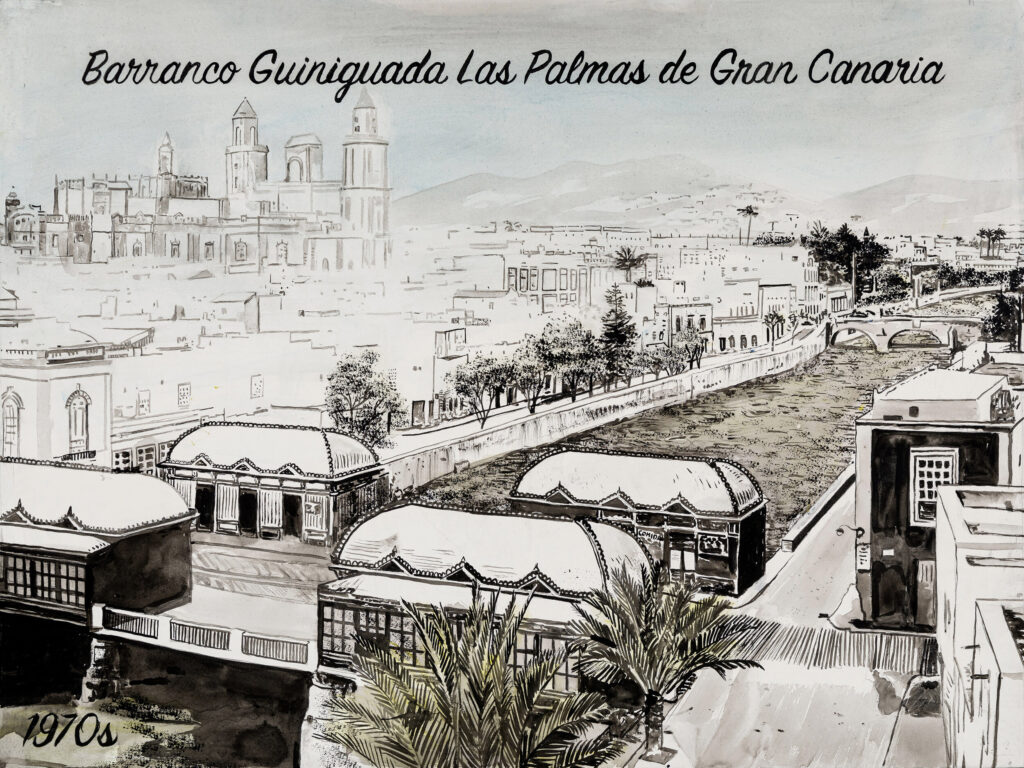Las Palmas, Gran Canario, Canary Island
Filled in the 1970s

Due to its proximity to the Pérez Galdós Theater, the kiosks and bars that were on the Palo Bridge were a meeting point for poets, writers, musicians, painters, opera and zarzuela singers, actresses and actors. It was the place where political and cultural ideas from the rest of the world were debated. As a curiosity, the mayor Ramírez Bethencourt, at the end of the plenary session that approved the destruction of the ravine, and perhaps knowing that it was going to kill the soul of the city, excused himself with this phrase: ´No queda más remedio. Es el precio del progreso´(There is no other choice. It is the price of progress). José Ignacio A.The Guiniguada ravine in Las Palmas not only provided a natural conduit for rainwater but was also the site of two famous bridges. In 1969, the city council, at the direction of mayor José Ramírez Bethencourt, approved the construction of a road on the site of the ravine. At the time, Spain was still ruled by the Franco dictatorship, so the mayor and council were not democratically elected and local citizens had minimal input into the decision. Despite considerable local outrage, the authorities pressed ahead, demolishing the Piedra Bridge in 1970 and the Palo Bridge in 1971. The painting is based on an old uncredited postcard.
No. 174